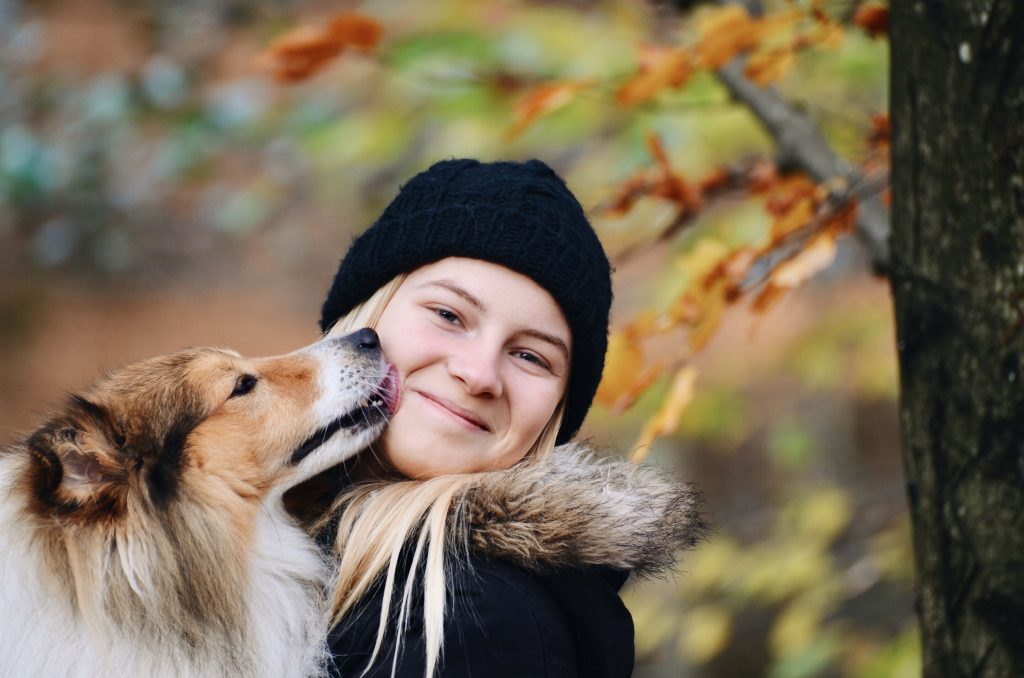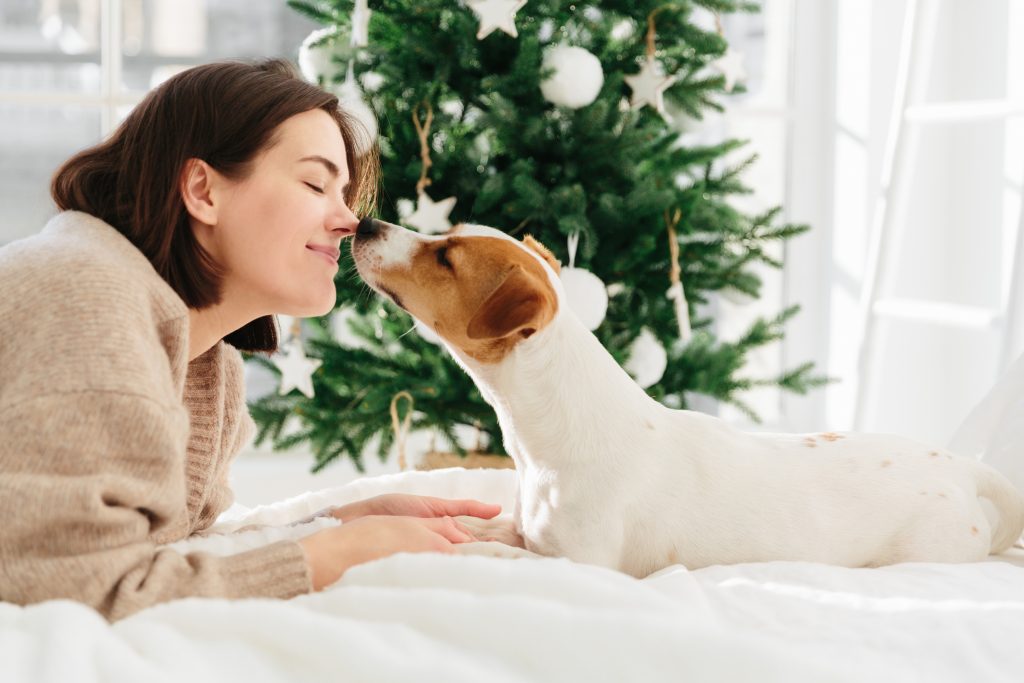
Are you ready to welcome a furry companion into your life? Getting a dog is a significant decision that requires careful consideration and planning. As a first-time dog owner, it can be overwhelming trying to figure out where to start. But worry not – this ultimate guide to getting a dog has got you covered! This guide provides a complete overview of all aspects of dog care, from potty training and leash training to crate training and behavioral issues. Whether you are considering adopting from a rescue organization or buying from a breeder, this guide offers valuable information to help you make an informed decision. The benefits of this guide include ensuring a happy and healthy life for your canine companion and strengthening your bond. Keep reading to learn more about the ultimate guide to getting a dog!
1. Prepare Your Home for a New Dog
Bringing home a new furry friend can be an exciting experience for any household. However, there are several important steps that need to be taken before the dog arrives home. One of the first things you need to do is prepare your home for the new addition. Here are some useful tips to help you get started:
1. Designate a space for the dog
Having a designated area for your new dog is essential in helping them feel safe and secure in their new environment. Decide which area of your house will be their primary living space, where their crate, bed, and toys will be located. This will provide them with a sense of comfort and give them a space to relax and unwind.
2. Use baby gates to restrict movement
Dog-proofing your home is crucial in ensuring the safety of your dog. Using baby gates to restrict their movement within the house can prevent them from accessing hazardous areas such as staircases, balconies, or any other areas that you want to keep them out of.
3. Puppy-proof your home
If you are bringing home a puppy, it is important to puppy-proof your home. Cover electrical cords, stow chewable items away in cabinets or closets, and secure the trash in order to reduce the risk of accidents. This also prevents your puppy from getting injured or sick from eating something they shouldn’t.
4. Hold a family meeting
Before bringing the dog home, it is important to have a family meeting to discuss the care and training required. Everyone should be aware of their roles and responsibilities, and be prepared to help in making the dog feel welcome. This ensures that everyone is on the same page and can prevent confusion and misunderstandings.

2. Gather Supplies—But Not Too Many!
When getting a dog, it is important to have the necessary supplies on hand to provide for their basic needs. However, it’s important not to go overboard and buy too many items at once. Here are some essential supplies new pet parents should acquire when getting a dog:
1. Collar and Leash: A collar and leash are crucial for your dog’s safety and well-being. They are necessary when taking your dog for a walk or traveling outside your home. Make sure to choose a collar that fits comfortably and securely, and a leash that is strong and durable.
2. Poop Bags: Picking up after your dog is a necessary part of responsible pet ownership. Make sure to always have poop bags on hand when taking your dog for a walk or traveling outside your home.
3. Dog Bed: Dogs need a comfortable place to sleep and rest. Choose a dog bed that is appropriately sized for your dog and made of high-quality, durable materials.
4. High-Quality Dog Food: Feeding your dog a nutritious, well-balanced diet is essential to their overall health and wellbeing. Choose a high-quality dog food that meets your dog’s specific dietary needs and preferences.
5. Toys: Toys provide mental and physical stimulation for your dog, and can help prevent destructive behavior. Start with a few different types of toys and observe your dog’s behavior to see what they prefer.
It can be tempting to buy lots of toys, treats, and accessories for your new furry friend. However, it’s important to avoid buying too many items at once. Instead, focus on the essentials and add other items as needed based on your dog’s individual needs and preferences. By doing so, you will ensure a smooth transition into your home and set your new dog up for a happy, healthy life with you.
3. Find a Veterinarian
Getting a dog is an exciting time, but it also comes with a lot of responsibility. One of the most important things you can do to ensure the health and well-being of your new furry friend is finding the right veterinarian. A veterinarian is not only responsible for keeping your dog healthy but can also be an essential resource for advice, information, and support. Here are some tips on how to select a veterinarian that aligns with your pet care philosophy.
First and foremost, it is essential to find a veterinarian that you trust and feel comfortable asking questions. Recommendations from friends and neighbors with similar pet care approaches can be a great starting point. Talking to them can provide insights into a veterinarian’s philosophy, their interactions with pets, and their staff. You can also check out online reviews from different websites to find out what people are saying about the veterinarian.
Once you have a list of potential veterinarians, don’t be afraid to reach out and schedule a visit to meet them and their staff. This visit can be an opportunity to get a feel for the facility and to see if you feel comfortable with their standards. Ask the staff questions and gauge how they answer and communicate. It’s important to choose a veterinarian who is willing to listen to your concerns and able to answer your questions in a way that is easy to understand.
During your visit, take note of the veterinarian’s philosophy in terms of pet care, including their approach to medical care and alternative therapies such as acupuncture. Being transparent about your pet care philosophy and goals can allow the veterinarian to tailor their recommendations accordingly. This can include diet and exercise in the prevention of chronic illnesses or understanding how to tackle a sudden illness or injury.
4. House Training
House training is one of the most important aspects of getting a new dog. It can be a challenging process, but with consistency and patience, it can be a manageable task. The key to successful house training is establishing a consistent feeding schedule, which can help you develop a predictable elimination schedule for your dog.
In addition, it’s essential to select a cue phrase, such as “go potty,” that you will use each time you take your dog outside for elimination. By using a cue consistently, your dog will learn to associate that phrase with the action you want them to take.
It’s also important to pick a designated potty spot and take your dog there each time you go out initially to connect the cue to the action. Once your dog has learned to associate the cue with the potty spot, they will be more likely to go to that spot on their own.
During this process, it’s crucial to give lots of praise and regularly administer positive reinforcement whenever your dog gets things right. This will help reinforce their behavior and encourage them to continue performing in the desired way.
There are two types of house training: crate training and paper training. Crate training involves keeping your pup in a crate for a specific amount of time. The idea is to restrict your puppy’s movement so that they are unable to eliminate anywhere else. In contrast, paper training entails using a specific area in the house, lined with newspaper or puppy pads, for your dog to eliminate on.
It’s important to note that every dog is unique, so it’s crucial to monitor their behavior and adjust your training style accordingly to help them learn best. With patience, consistency, positive reinforcement, and the correct type of house training, you can help your furry friend adapt smoothly to their new home.
5. Know Your Dog’s Needs
Getting a dog requires a significant commitment of time, resources, and energy. To ensure that your furry friend stays healthy and happy, it’s essential to understand their unique physical and mental needs.
Physical exercise is crucial for a dog’s overall health and well-being. Dogs should engage in at least 30 minutes to one hour of physical activity daily, depending on their energy level and age. Physical exercise could include walking, running, playing fetch, or engaging in other high-energy activities that can help keep them fit and healthy.
In addition to physical exercise, dogs also require mental stimulation to ward off boredom and keep them sharp. Enrichment toys such as Kongs and puzzle toys can help keep a dog’s mind engaged, and obedience training can offer mental stimulation while also teaching positive behaviors.
Socialization training is essential for dogs of all ages and is a great way to help them learn to interact with other dogs and humans. Positive reinforcement, such as rewarding with treats, helps reinforce good behavior and encourages them to continue performing in the desired way.
A dog’s diet plays a critical role in their overall health. A balanced diet that meets their nutritional needs is essential to maintain optimal health. Consult with your veterinarian to determine the best diet for your dog and how much to feed them.
Regular vet visits, including teeth cleaning and checkups, are also essential in maintaining optimal health for your dog. Early detection and treatment of any health issues can help prevent serious problems down the line.
Finally, when discussing the needs of a dog, it’s important to emphasize the importance of positive reinforcement training techniques and addressing any behavioral issues that may arise. Dogs thrive on positive reinforcement and encouragement, and appropriately training them can prevent a host of behavioral issues that may arise later on.

Conclusion
In conclusion for a guide to getting a dog, owning a dog is a wonderful experience that brings joy and love to our lives. However, it’s crucial to be prepared for the challenges of pet parenthood and prioritize the health and wellness of our furry companions. We must stay informed about common health and behavioral issues and be responsible dog owners by keeping our dogs well-exercised, socialized, and trained. It’s important to remember the financial and time commitments involved in owning a pet and to always prioritize responsible dog ownership. Let’s enjoy the journey of being a dog owner while keeping our fur babies happy, healthy, and loved!








